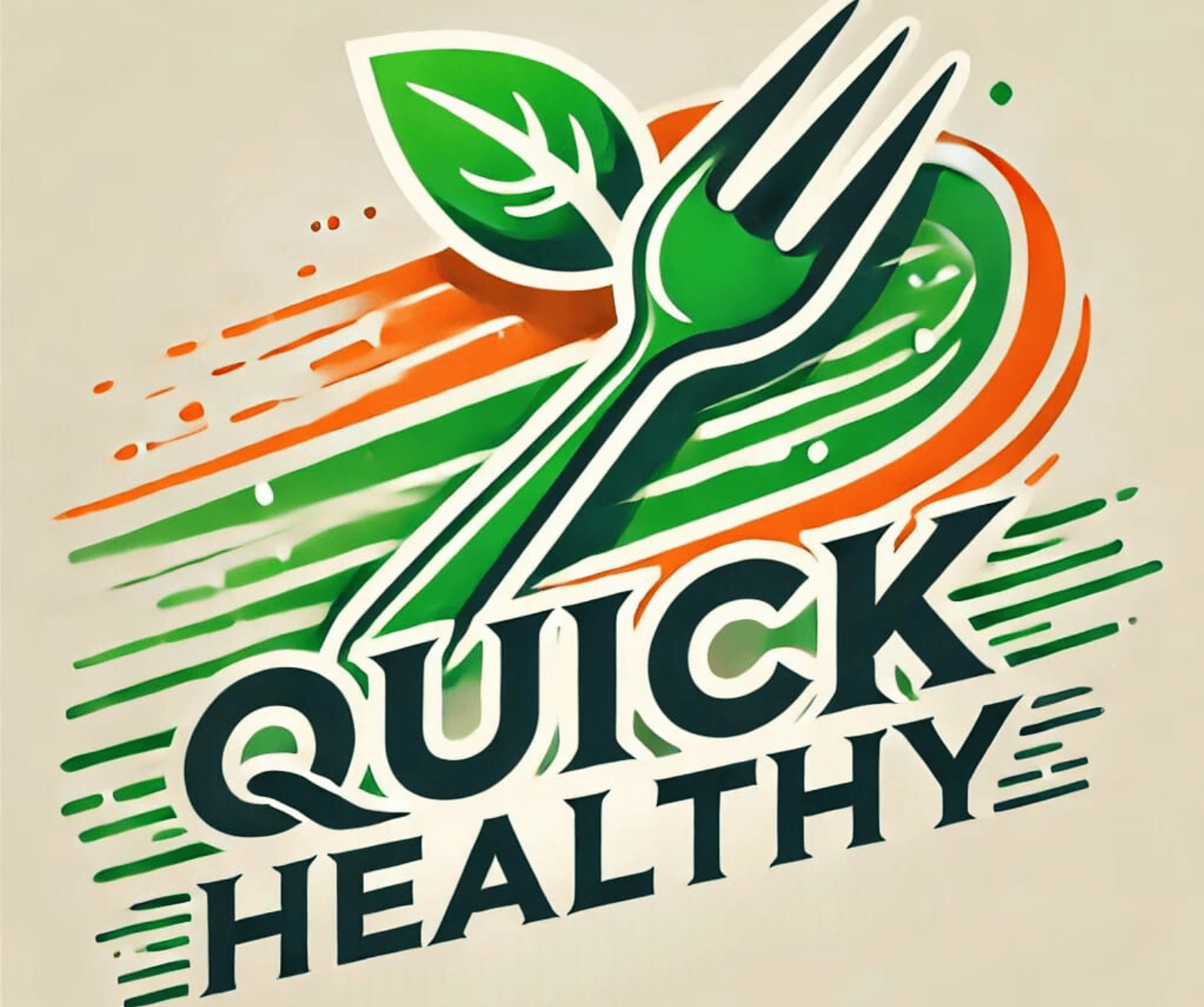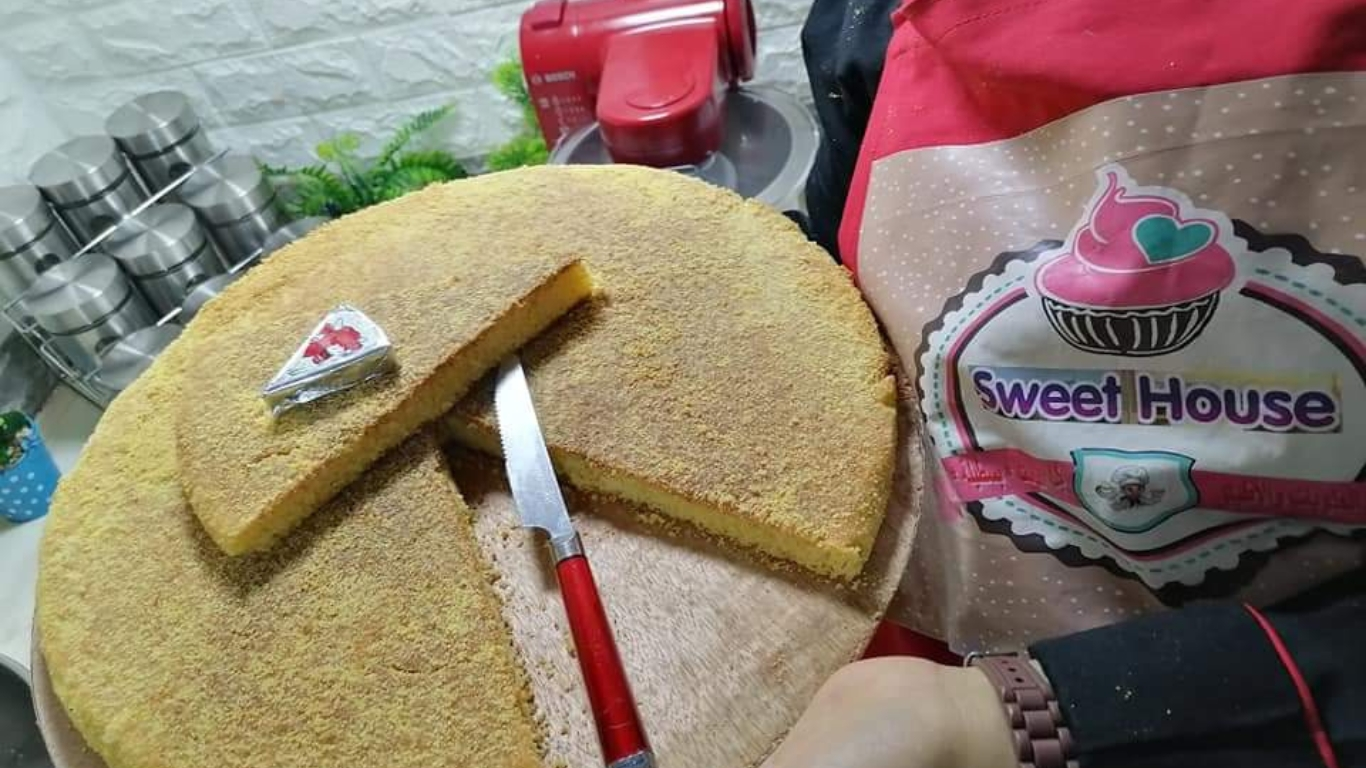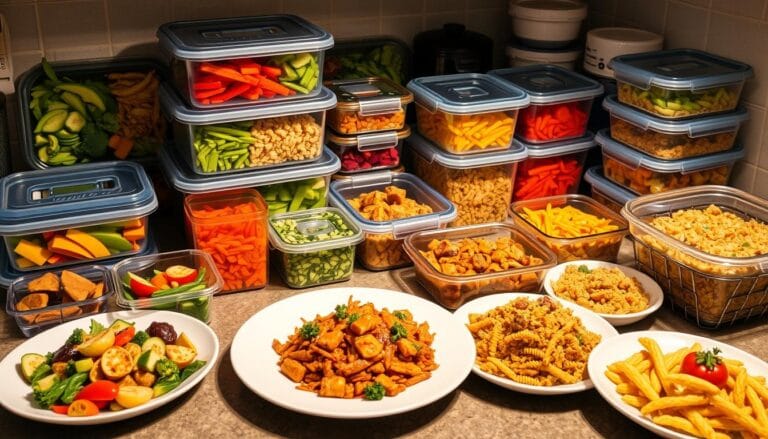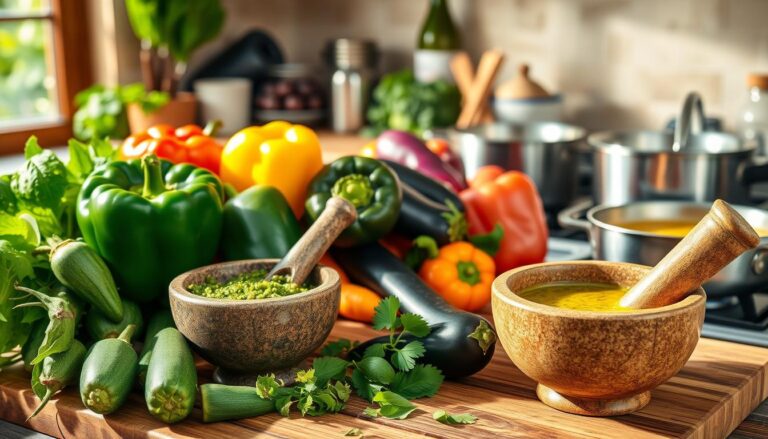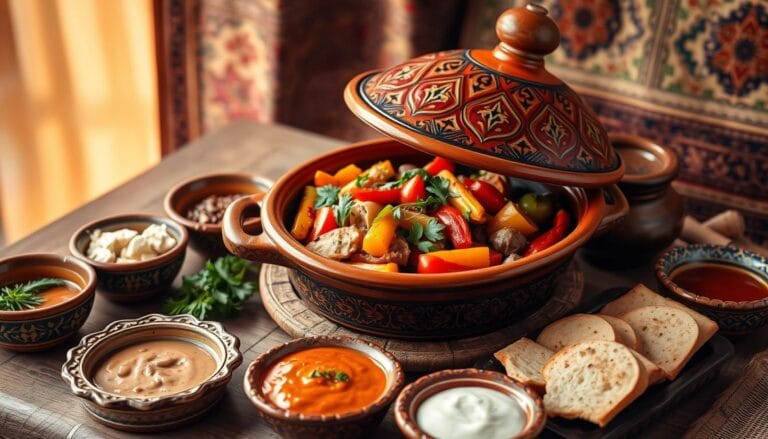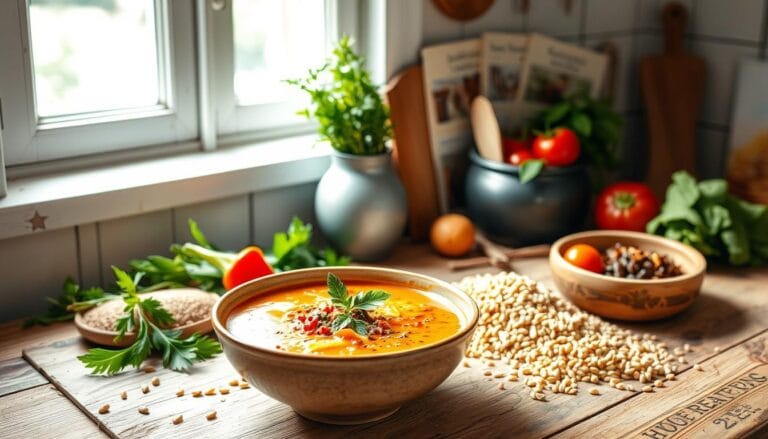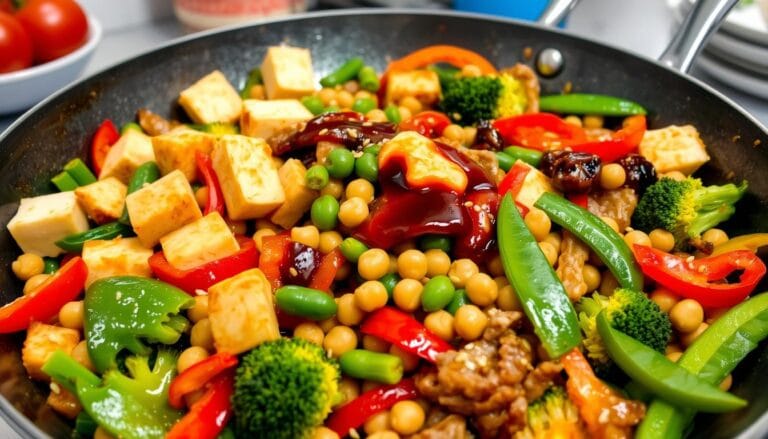Best Harsha (Moroccan Semolina Bread)
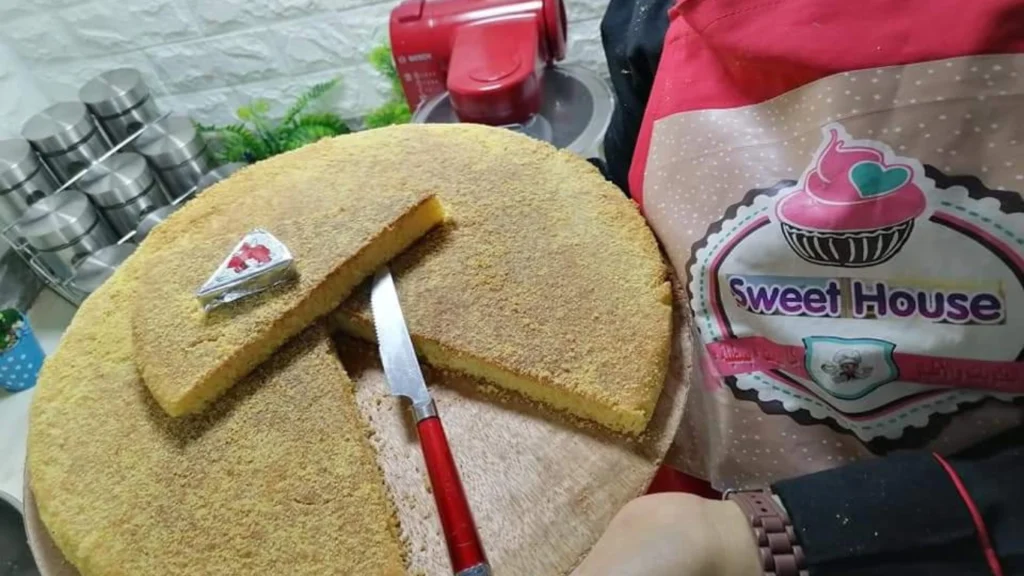
Table of Contents
Best Harsha (Moroccan Semolina Bread)
The smell of fresh bread can take you on a journey, straight to a Moroccan kitchen. Harsha, a semolina bread, is more than a quick breakfast. It’s a way to connect with Moroccan traditions.
Picture waking up to a warm, golden-brown semolina bread. It’s crispy outside and soft inside. This bread is not just a meal; it’s a cultural experience that brings North Africa’s flavors to your table.
Harsha is perfect for anyone looking to try new breakfasts or explore Moroccan recipes. You can enjoy it plain, with honey, or with savory foods. It fits into any morning routine.
We’ll explore harsha’s history, how to make it, and its place in Moroccan cuisine. Get ready to make your breakfast special with this amazing Moroccan bread.
Understanding Harsha: The Authentic Moroccan Semolina Bread
Explore the world of Harsha, a beloved staple in Moroccan cuisine. It adds warmth and tradition to meals in North Africa. This semolina bread is more than food; it’s a cultural treasure that links generations through its rich heritage.
Origins and Cultural Significance
Harsha comes from Moroccan kitchens, with roots in centuries-old traditions. Berber communities created this bread as a solution for meals with few ingredients. It became a sign of hospitality and family bond.
“In every Moroccan home, Harsha tells a story of resilience, creativity, and love” – Moroccan Culinary Historians
Traditional Role in Moroccan Cuisine
In Moroccan cuisine, Harsha is more than just food. It is:
- A breakfast staple with honey or olive oil
- An accompaniment to traditional tagines
- A versatile street food enjoyed everywhere
Regional Variations Across Morocco
Different parts of Morocco have their own Harsha recipes. These reflect local ingredients and cooking styles. Each version enriches the bread’s story.
| Region | Unique Characteristic |
|---|---|
| Marrakech | Thicker, more rustic texture |
| Coastal Areas | Often incorporates seafood-inspired seasonings |
| Atlas Mountains | Prepared with additional local grains |
Understanding Harsha shows its importance in nutritious meals. It represents the heart of Moroccan cuisine. This bread keeps evolving while staying true to its cultural roots.
Essential Ingredients for Perfect Harsha
Making authentic Harsha starts with picking the right ingredients. This traditional Moroccan semolina bread uses simple, high-quality parts. These parts turn basic items into a tasty breakfast.
Your easy recipe starts with these key ingredients:
- Semolina flour: The star ingredient that gives Harsha its unique texture and golden color
- All-purpose flour: Helps create a smooth, consistent dough
- Butter or olive oil: Adds richness and helps bind ingredients
- Warm water: Crucial for activating and binding the dry ingredients
- Salt: Enhances overall flavor profile
Choosing quality ingredients is important. Find finely ground semolina flour at specialty stores or well-stocked markets. Fresh, high-quality butter or extra virgin olive oil will make your Harsha stand out.
“The beauty of Harsha lies in its simplicity and the quality of its wholesome ingredients.” – Moroccan Culinary Tradition
Pro tip: If you can’t find semolina flour, use a mix of fine cornmeal and all-purpose flour. This substitute lets you enjoy the bread without losing taste or texture.
| Ingredient | Quantity | Purpose |
|---|---|---|
| Semolina Flour | 2 cups | Primary texture and flavor |
| All-Purpose Flour | 1/2 cup | Binding and consistency |
| Butter/Olive Oil | 3 tablespoons | Moisture and richness |
Kitchen Tools and Equipment Needed
Making delicious Harsha is easy without a fancy kitchen. The right tools and smart tips help you make this Moroccan bread at home.
Harsha making is about knowing your kitchen and using it well. Whether you’re experienced or new, the right cookware makes a big difference.
Traditional Cooking Methods vs Modern Approaches
Traditional Harsha making uses:
- Cast iron skillet
- Flat griddle
- Manual mixing techniques
For quicker making, try:
- Non-stick pans
- Electric griddles
- Stand mixers for faster prep
Recommended Cookware for Perfect Results
Choose versatile cookware for Harsha:
- Cast iron skillet: Even heat
- Non-stick griddle: Easy to clean
- Heavy-bottom pan: Stable heat
Temperature Control Tips
Keeping the right temperature is key for perfect Harsha. Use medium-low heat and look for golden edges. A digital thermometer ensures consistent results.
“The secret to great Harsha is patience and precise temperature control” – Moroccan Cooking Experts
Remember, practice improves your Harsha making. Each time, you’ll find new ways to save time and get better at cooking.
Quick and Healthy Breakfast: Making Harsha Part of Your Morning Routine
Make your mornings better with Harsha, the Moroccan semolina bread. It’s packed with nutrition and easy to make. Start your day with a delicious and simple breakfast.
“Breakfast is the most important meal of the day, and Harsha makes it effortless and delicious!” – Moroccan Culinary Experts
Getting Harsha ready for breakfast doesn’t take long. Here are some tips to make it a part of your morning:
- Prep ingredients the night before to reduce morning cooking time
- Make multiple batches and freeze for quick reheating
- Pair with protein-rich spreads for a balanced quick and healthy breakfast
Boost your morning with a few easy Harsha recipes. Try these quick breakfast ideas:
- Harsha with scrambled eggs and fresh herbs
- Topped with honey and cream cheese
- Served alongside a protein smoothie
Pro tip: Batch cooking Harsha on weekends can provide you with ready-to-eat morning fuel throughout the busy workweek.
Step-by-Step Guide to Making Harsha at Home
Making Harsha bread is easy with the right recipes and tips. This traditional Moroccan semolina bread is great for those wanting to try new recipes.
Harsha needs careful attention and practice. This guide will help you make this bread with ease.
Mixing the Perfect Dough
First, get your ingredients ready and clean your workspace. Here’s how to mix the dough:
- Use fine semolina flour for the best texture
- Combine dry ingredients thoroughly
- Add warm water gradually to create a consistent dough
- Knead until the mixture becomes smooth and elastic
Shaping Your Harsha
Shaping is key for authentic Harsha. Follow these steps:
- Divide dough into equal portions
- Flatten each portion into round discs
- Ensure uniform thickness (about 1/2 inch)
- Create gentle edges for traditional appearance
Cooking Techniques
Cooking Harsha needs the right timing and temperature. Here’s a quick guide:
| Cooking Method | Temperature | Cooking Time |
|---|---|---|
| Stovetop Griddle | Medium-Low Heat | 4-5 Minutes per Side |
| Cast Iron Skillet | Medium Heat | 3-4 Minutes per Side |
“The secret to perfect Harsha is patience and practice.” – Moroccan Cooking Tradition
With these tips and recipes, you’ll make authentic Harsha soon. Remember, each try makes you better!
Common Mistakes to Avoid When Making Harsha
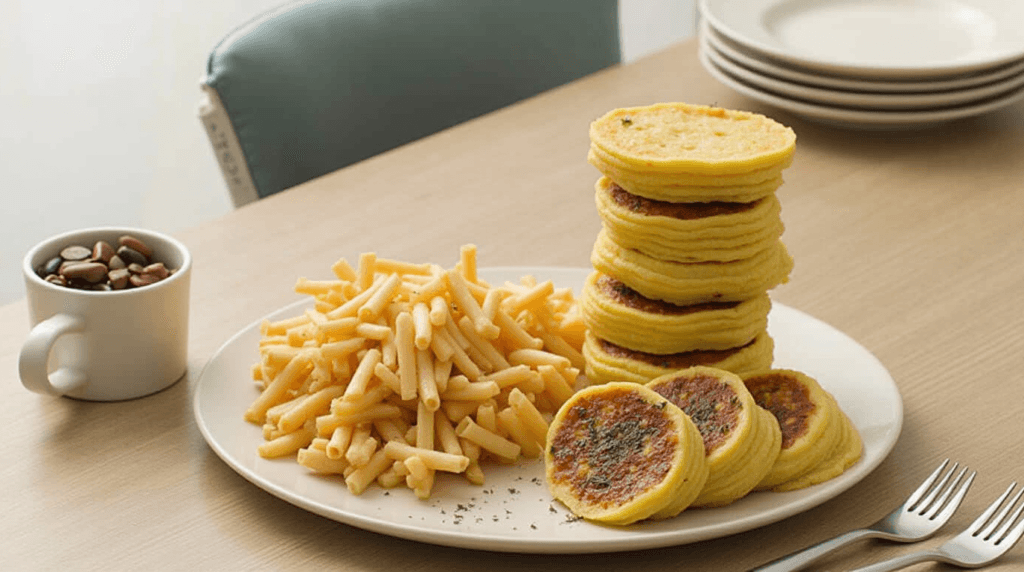
Making perfect Harsha needs careful attention. Many home cooks face issues that can ruin the bread’s texture and taste. Knowing these common mistakes helps you make a tasty Harsha that’s good for you.
- Dough Consistency Errors Too much or too little mixing can mess up your Harsha’s texture. Go for a smooth mix without overdoing it.
- Heat Management Mistakes Wrong heat can cause uneven cooking. Use medium-low heat for a golden crust and soft inside.
- Resting Time Misconceptions Not letting the dough rest is a big mistake. It stops the semolina from soaking up liquid, making the bread less tasty.
“Perfecting Harsha is an art of patience and precision” – Moroccan Culinary Tradition
Your aim is to make a Harsha that’s a healthy energy boost. Focus on the right mix of ingredients and cooking methods for the best results.
| Common Mistake | Consequence | Solution |
|---|---|---|
| Incorrect Flour Ratio | Dense, Heavy Texture | Measure Semolina Precisely |
| Wrong Pan Temperature | Burnt Exterior | Use Medium-Low Heat |
| Rushing the Process | Uneven Cooking | Allow Proper Resting Time |
Avoiding these mistakes turns your Harsha into a key part of a healthy diet. It makes for a tasty and nutritious start to your day.
Best Serving Suggestions and Pairings
Harsha, a staple in Moroccan cuisine, is perfect for both traditional and modern snacks. This semolina bread can make your breakfast and snacks better with its rich flavors and flexibility.
Traditional Moroccan Accompaniments
In authentic Moroccan homes, harsha is enjoyed with simple yet tasty toppings. Your traditional options include:
- Fresh honey drizzled generously
- Creamy unsalted butter
- Homemade fruit preserves
- Olive oil with a sprinkle of salt
Modern Serving Ideas
For those looking for new grab-and-go options, harsha can be updated. Try these creative ideas:
- Breakfast sandwich with scrambled eggs
- Spread with avocado and microgreens
- Mini pizza-style harsha bites
- Toasted and topped with smoked salmon
| Serving Style | Preparation Time | Flavor Profile |
|---|---|---|
| Traditional Honey | 2 minutes | Sweet, Mild |
| Egg Sandwich | 10 minutes | Savory, Protein-Rich |
| Avocado Toast | 5 minutes | Creamy, Nutritious |
“Harsha is not just bread, it’s a canvas for culinary creativity in Moroccan cuisine.” – Moroccan Food Expert
Whether you like traditional or modern, harsha offers a delightful dining experience. It connects you to Morocco’s rich flavors.
Storage Tips and Reheating Methods
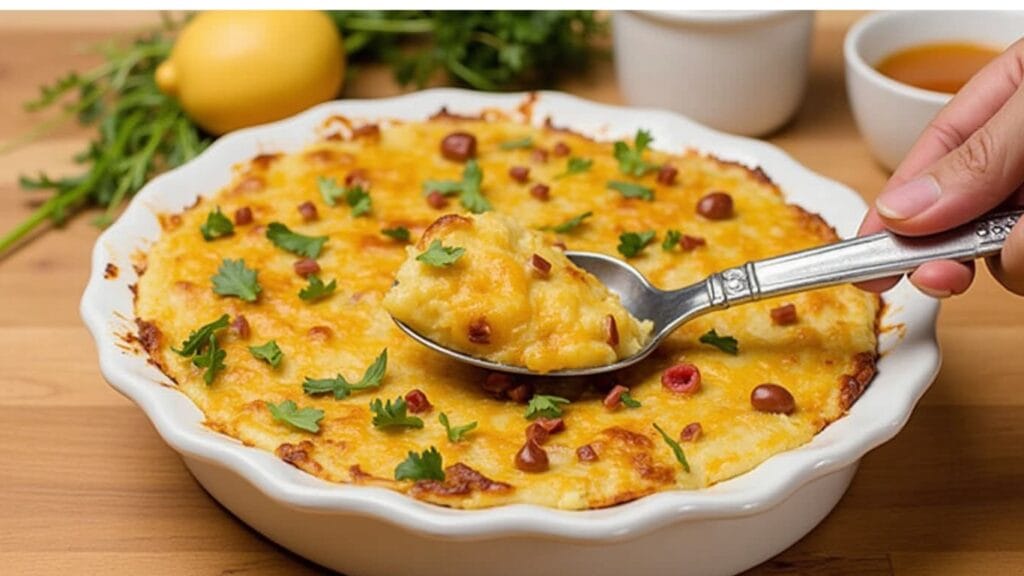
Keeping Harsha fresh is key to enjoying its taste and texture. Smart storage helps your quick and healthy breakfast stay fresh. Learn how to store this traditional Moroccan semolina bread right.
For short-term storage, keeping the bread in the best conditions is important. This prevents it from drying out or losing its softness.
Storage Best Practices
- Cool completely before storing to prevent moisture buildup
- Use an airtight container to maintain freshness
- Store at room temperature for up to 2 days
- Wrap individually in plastic wrap for easier preservation
Freezing Techniques for Long-Term Storage
Freezing Harsha is great for busy mornings. Wrap each piece in freezer-safe packaging to keep its taste fresh.
| Storage Method | Duration | Recommended Approach |
|---|---|---|
| Room Temperature | 1-2 days | Airtight container |
| Refrigerator | 3-4 days | Sealed plastic bag |
| Freezer | Up to 3 months | Individually wrapped |
Reheating for the Perfect Texture
Here are simple ways to reheat your Harsha:
- Oven method: Preheat to 350°F, wrap in foil, heat for 5-7 minutes
- Skillet method: Warm on medium heat for 1-2 minutes per side
- Toaster method: Use low setting to prevent burning
“The secret to a delicious quick and healthy breakfast is knowing how to store and reheat your Harsha perfectly!” – Moroccan Cooking Experts
Pro tip: Always reheat Harsha just before serving to enjoy its fresh, warm texture and maximize its delightful taste.
Health Benefits of Harsha’s Ingredients
Harsha is more than just tasty Moroccan bread. It’s packed with nutrients that can make your breakfast healthier. Knowing the health perks of its main ingredients shows why it’s good for a balanced diet.
Semolina flour, Harsha’s main ingredient, has many health benefits. Let’s look at its key advantages:
- Rich in protein and complex carbohydrates
- Provides essential minerals like iron and magnesium
- Contains dietary fiber for digestive health
Nutritional Breakdown
| Ingredient | Nutritional Value | Health Impact |
|---|---|---|
| Semolina Flour | High in Protein | Muscle support and energy |
| Milk | Calcium-rich | Bone health |
| Butter | Healthy Fats | Nutrient absorption |
Dietary Considerations
Harsha is great for nutritious meals. It’s a good mix of nutrients for those watching their diet. Vegetarians and gluten-sensitive individuals should consult their nutritionist about possible changes.
“Food is not just about calories, it’s about nourishment.” – Unknown
Start your day with this nutrient-rich bread. It boosts your health and brings authentic Moroccan tastes to your morning.
Adapting Harsha for Different Dietary Requirements
Harsha, the traditional Moroccan semolina bread, is great for many diets. It’s perfect for those who are gluten-sensitive, vegan, or need a quick energy boost. You can easily change this classic recipe to fit your dietary needs.
If you can’t have gluten, try using different flours instead. Here are some gluten-free options:
- Almond flour
- Buckwheat flour
- Quinoa flour
- Rice flour
Vegans can make Harsha by swapping dairy for plant-based options. Coconut milk or almond milk are great substitutes. They keep the bread’s texture and add extra nutrition.
“Dietary restrictions don’t mean sacrificing flavor or tradition” – Moroccan Culinary Experts
For more energy, add chia seeds, ground flaxseed, or hemp hearts to your dough. These ingredients boost protein and give you energy all morning.
With these changes, everyone can enjoy Harsha, no matter their dietary needs or restrictions.
Conclusion
Discovering Harsha opens a window into Moroccan cuisine, making your breakfast healthier and tastier. This traditional semolina bread is more than food—it connects you to Moroccan traditions.
Your kitchen can be a place to discover new tastes with Harsha. It’s easy to make and perfect for those wanting to try something new. Whether you’re experienced or just starting, Harsha adds Moroccan flair to your mornings.
Harsha not only gives you a nutritious meal but also a peek into Morocco’s rich food culture. You can change it up to make it your own. Enjoy the fun of cooking something real and tasty—it’s a treat for your taste buds.
Exploring Moroccan cuisine is like hearing a story with each dish. Harsha is a celebration of flavors and traditions. Start your cooking adventure today and let the smell of Harsha guide your breakfast.
FAQ
What exactly is Harsha?
Harsha is a traditional Moroccan semolina bread. It’s quick to make and great for a healthy breakfast. This flat, pan-fried bread is made from semolina flour. It’s known for its unique texture and versatility in Moroccan cuisine.
Is Harsha difficult to make at home?
No, it’s not hard at all! Harsha is an easy recipe. You only need a few ingredients like semolina flour, butter, milk, and salt. You can make this delicious bread in less than 30 minutes.
What are the best ways to serve Harsha?
There are many ways to enjoy Harsha. Traditionally, it’s served with honey, butter, or jam. You can also use it as a sandwich base, pair it with eggs, or enjoy it with Moroccan mint tea for a nutritious meal.
Can Harsha be part of a healthy diet?
Yes, it can! Harsha is made with wholesome ingredients. It’s a great addition to a balanced diet. The semolina flour gives you complex carbohydrates and protein, making it a great energy booster for the morning.
How long can I store Harsha?
You can store Harsha at room temperature for 1-2 days in an airtight container. For longer storage, freeze it for up to a month. Just reheat it in a pan or toaster for a quick breakfast.
Are there variations for different dietary needs?
Yes! Harsha can be adapted for different diets. There are gluten-free and vegan versions. These options make sure everyone can enjoy this Moroccan staple.
What kitchen tools do I need to make Harsha?
You’ll need basic kitchen tools like a mixing bowl, measuring cups, a skillet or griddle, and a spatula. Harsha is simple to make, and you probably already have most of these tools.
